Shimano Drops Major Road Group Upgrades
Shimano pushed out a pair of new wireless, electronic 12-speed road groupsets today. The names and base numerical designations of these groupsets are Dura Ace R9200 and Ultegra R8100. This road upgrade is Shimano’s most ambitious and far reaching since 2016, when the 9100/9150 Dura Ace was launched (with disc brakes), but what may make this launch even more impactful yet is the simultaneous release of an Ultegra groupset featuring most of the same tech you’ll find in today’s Dura Ace launch.
Shimano’s new tech always debuts with Dura Ace, and reliably one year later a downstreamed Ultegra version will hit the market. Every four years that cycle renews with a new Dura Ace launch. Shimano has broken with that tradition by featuring a major tech upgrade to Dura Ace and Ultegra simultaneously. Both these groups are scheduled to be seen on new bikes starting in September (imminently), followed a month later by aftermarket availability. These groupsets do not include any mechanical shifting; everything is electronic. There is a rim brake version made of these groupsets (why I don't know).
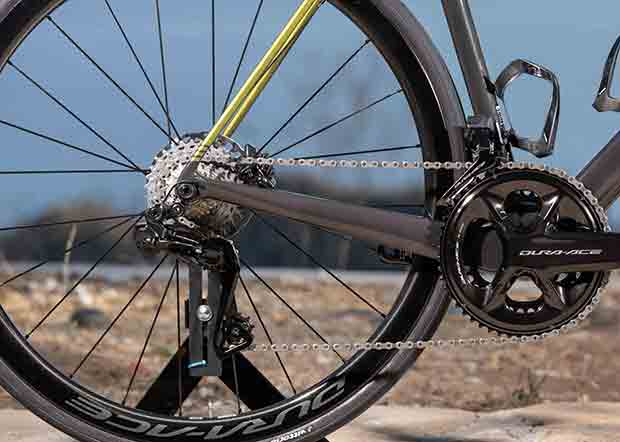
Overview
If you stand back 50 paces and just look for obvious themes, the big deal is the move from 11 speeds to 12. Unlike SRAM, which debuted its 12-speed drivetrain by starting with a 10-tooth cog, Shimano has chosen to keep the 11-tooth as its first position cog. One nice element of this is backward compatibility with existing Shimano-style body drivers. SRAM requires the use of its XDR body driver for 12-speed systems, and while Shimano has also introduced new wheel tech today you can put one of these new 12-speed cassettes on existing wheels.
Beyond this, the sense you get is degree to which MTB and gravel continue to impress themselves upon road. This isn’t just in the number of gears (Shimano first intro’d 12-speed in its offroad groupsets). Shimano also borrowed Hyperglide + technology from its offroad groupsets and this is the intricate tooth shaping that increases shift speed and the capacity to shift while the drivetrain is under heavy load.
But this isn’t all. Much of the really great ergonomic feel of the road shifters in Shimano’s 9200 and 8100 groupsets comes from what Shimano learned while developing its really comfortable GRX gravel groupset.
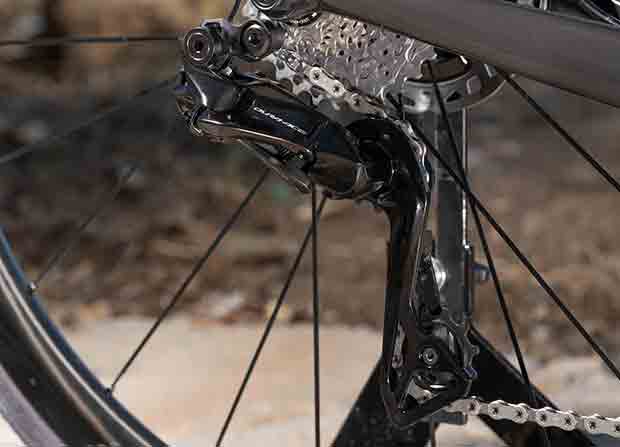
And then there’s the gear ranges. Yes, one clear advantage SRAM has had over Shimano in road over the past 30 months is one additional cog; but more importantly are the cassette ranges SRAM offered when it intro’d the AXS platform in April of 2019. With today’s launch Shimano doesn’t entirely – but it mostly – closes that gap, and this is also due to the impression of gravel onto road. SRAM’s AXS groupsets are dual use, road and gravel, but Cervelo’s Caledonia road bike was a breakout hit with tiny gears available on an classics-oriented bike. Before today, SRAM was just a better gearing option for bikes like the Caledonia. Shimano’s new groupsets offer gearing down to a 1:1 ratio (same size cassette in the back as the chain ring in the front), and that forecloses on a major Shimano shortfall if you like to ride hills and you’re a D rider on Zwift.
There is just so much to unpack with this groupset. I haven’t even mentioned brakes and power meters, each new with these groups. In fact, as I ride this groupset I think the brakes are the most notably improved product. Let’s dive into this.
Wireless 12-speed electronic shifting
Yes. Wireless. Mostly. There are no wires leading from the road levers to the derailleurs. The conductor of this symphony is Shimano’s new rear derailleur. The shifters wirelessly communicate with that component and from there yes, you do have wires that lead from the RD to the battery, and from there to the FD. SRAM’s system is entirely wireless, but that is in large measure due to SRAM’s choice to stick a battery on each derailleur. Shimano’s single central battery mandates a wire from the battery to each derailleur, and that battery is usually housed in the seat tube or post.
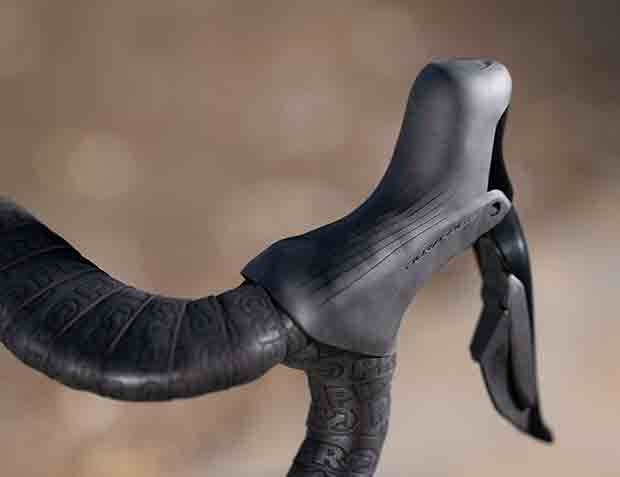
Shimano has focused a lot on the speed of its integrated circuitry and communications protocols. It promises 4x the processing speed and one-quarter the power consumption of components powered by the industry leading Zigbee low-power wireless protocol. I’m not a sensitive enough rider to discern the difference faster wireless communication makes in shift speed. Shimano claims shifting is 66 percent faster with these new derailleurs, front and rear, but I suspect the lightning fast shifting is a combo of this faster communication protocol and the porting of Hyperglide + from offroad to road.
The A Junction, the E Tube D-Fly placed in-line, and the charging linkage device all go away. (Thank you!) All you do is plug a charging cable into the RD and that charges everything on the frame. Charging the RD does not charge the shifter's batteries. A coin cell battery is in each shifter; the batteries are good for a year and-a-half’s worth of riding at least; and they’re easily accessible when they need to be changed.
Ecosystem
I have seen the new E Tube App function on one somebody else’s iPhone, but I don’t have access to that firmware upgrade as of this writing, so I’ll have to speak to it from memory. The app is at least on par with other similar apps and by “similar apps” I guess I place in this family both SRAM’s AXS app as well as the apps from smart bikes, such as those you’d use to configure Wahoo KICKR Bike, the Tacx NEO Bike, and the Stages Bike. They all have a particular vocabulary and look to them and I guess that makes sense because the smart bike makers also make head units that must interface with the electronic components.
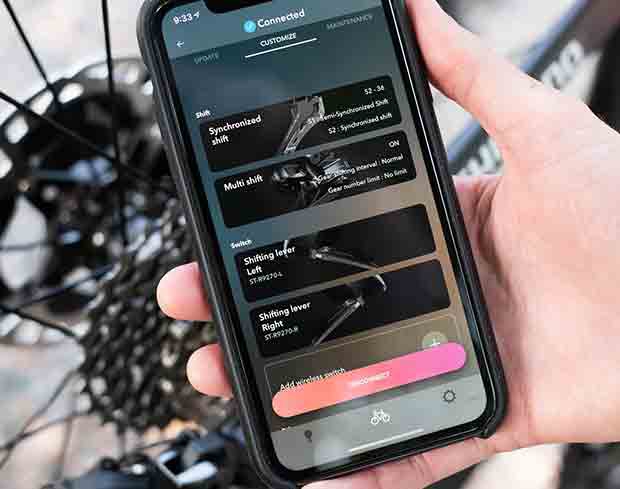
In an ideal world I’d like to know the status of both main and coin cell batteries; I’d like status to reflect a percentage or gradient, not just whether the battery is dead or alive; and I’d like that battery status to show on my head unit. Where are we on that?
When you pair your Garmin head unit with a Shimano Di2 system you can set one of your fields to show the main battery level. That’s good, and I am sure that will continue. Shimano currently transmits the coin cell battery levels as well, but Garmin has not as of yet enabled that. I must assume that is forthcoming from Garmin.
You check the battery, when you’re off the bike, by pressing the button on the rear derailleur for about 1 second. The LED light will display the battery level thusly:
– Solid green = 100% charged
– Blinking green = 75-50% charged
– Solid Red = 50-25% charged
– Blinking Red = less than 25% charge remaining
Shimano’s new group has (and this is not new) buttons on the top of its hoods that allow the head unit to display, while riding, some of the functions just described that are viewable by the RD’s blinking lights. So, that battery level function you see just described above is viewable on the head unit, via that button on the top of the hood. That button will signal your ability to see your main battery level on your head unit, if you program it that way via the E-TUBE app. You can also change modes like from synchro to semi-synchro to normal shifting all while riding.
You can check the coin cell battery levels on the E-TUBE app. You just can’t – yet – check those levels during a ride, on your head unit. But that surely is coming. Again, Shimano is sending the data, it’s just a case of how quickly the head unit makers write the code that onboards and displays it.
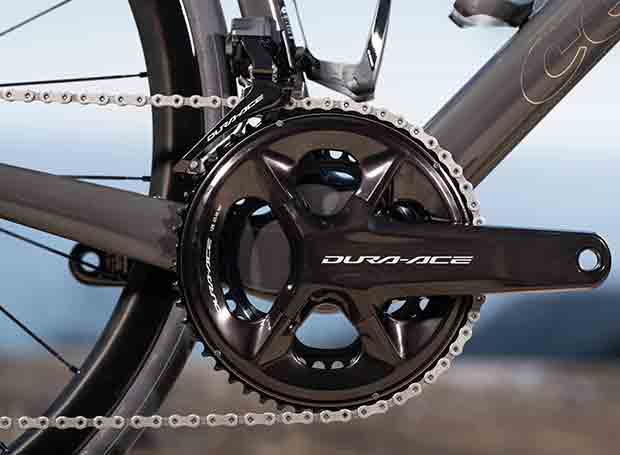
My Wahoo ELEMNT ROAM instantly saw the 9200 groupset when I asked the ROAM to look for sensors. I paired just as if I was trying to pair with a 9150 system. I’ll write further about what the head unit makers – Garmin, Wahoo and Stages at least – have in mind for this groupset.
Drivetrain and gearing
Shimano and SRAM are each choosing a chain ring differential in their 2x systems. SRAM has chosen 13 teeth, as in, a 48×35. Shimano has settled on 16 teeth, your options in these new 9200 and 8100 groupsets are 50×34, 52×36, and 54×40. Check that. The Ultegra 8100 groupset offers 50×34 and 52×36, only Dura Ace 9200 gives you the 54×40 option. You will have a pair of available 12-speed cogsets, at least for starters, 11-30, and 11-34. Sometime down the line there will also be an 11-28 cogset at the 9200 level.
The rear derailleur can take a 34-tooth cog and no larger. That’s fine for me. I would have preferred 36 teeth, because I wouldn’t mind having access to an 11-36 cassette. But let’s put this in perspective. The capacity of this groupset, in terms of gearing width, is 39 teeth. This is the chain ring tooth differential (16 teeth) added to the cogset differential (23 teeth on the 11-34 cogset). A range of 39 teeth is massive for a Shimano road groupset. It wasn’t that many generations ago when the max range was 20-something teeth. It used to be you’d have to put a really long cage on your RD to get that kind of range, with shift performance suffering a bit. The cages on these derailleurs are certainly long, but they’re designed that way rather than as an afterthought.
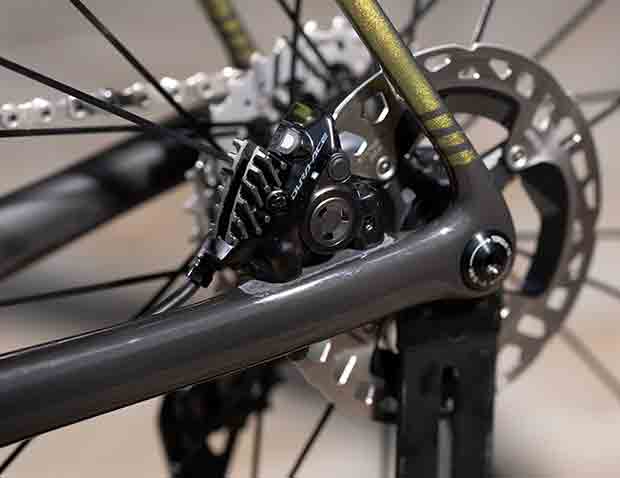
Dura Ace will offer crank lengths of 160mm, 165mm, 167.5mm, 170mm, 172.5mm, 175mm, and 177.5mm, and the Q Factor is 148mm. The Q Factor is the distance from the pedal shoulder, on the crank – where the pedal meets the crank – to the centerline of the frame, and then doubled. Almost all road bikes have a Q of 145mm to 150mm, except for some of the newer gravel options that add 5mm of Q, to accommodate fatter tires on certain frames, so this is a standard Q.
Braking
The brakeset did not escape a major renovation with this 9200 and 8100 launch. The new brakes are easier to bleed, but in truth – while I’m not a pro mechanic – it seems to me this simply places Shimano more on par with SRAM when it comes to bleed functionality at the caliper. The pads are farther apart when not engaged and it’s not a huge amount but noticeable. Shimano apparently could not make a road disc brake rotor any better than its offroad rotor, so, the MT900 is what will get spec’d on these new groupsets.
Servo Wave has been a Shimano tech for a long time. Imagine a cam-style path during brake engagement, where the pads engage quickly when you begin depressing the brake lever, and then more finely as the lever continues to engage. The ST-R9270 shift/brake lever offers a 13% greater control area, according to Shimano. The idea, is to allow you finer control of the brake after the pad first engages the rotor, I believe by really accentuating the initial throw of the pads toward the rotor in the first few millimeters of lever pull, and followed by a big decrease in pad engagement. Here’s how I envision it: imagine a pilot landing his plane by falling steeply out of the sky until the last minute, when he pulls up and levels out just before the wheels touch down, gently kissing the tarmac.
Do the brakes work like this? Maybe my description is over-dramatic. But as I said early on, I think the most obvious functional difference that I can feel is in the way this groupset’s brakes work.
Ergonomics
Here again, I think you get away with a lot of stuff on the road that you can’t fake when you turn the bike off into the dirt. Braking, gearing, suspension obviously, you can’t finesse what just won’t do, and I think you discover that on long gravel rides. When Shimano made its GRX gravel groupset hand comfort was notable. This was not lost – apparently – when Shimano commenced work on 8100 and 9200, and you can really tell how much effort went into this.
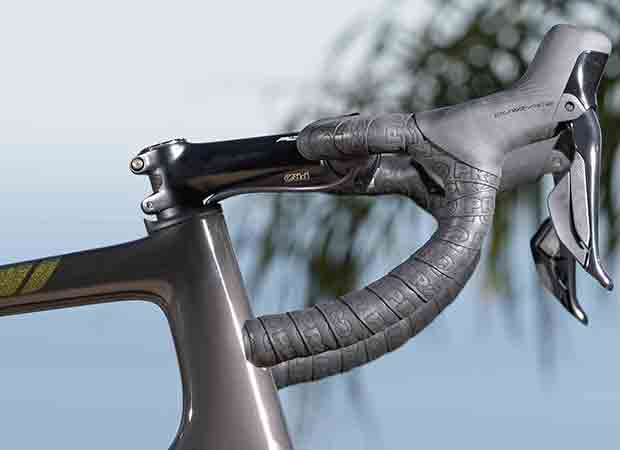
One of the real problems with road bikes since, like, forever is that trough your hands fall into when they’re on the hoods. This isn’t always the case, depending on how well the handlebars and the hoods mate to each other but the platform on these hoods, where your palms rest, is higher than typical as I think you can see from the view just above. The surface is planar with the bar. I get that with some bar/hood combos, but it’s really hit and miss. It’s a lot easier, with a lot of handlebars, with the hood shapes on these groupsets.
Weight and drag
The front derailleur is considerably slimmer displaying, according to Shimano, a 33% reduction in frontal area. So there’s that. The FD is a slave in this system so Shimano was able to build this component down. But the overall weight of this groupset versus 9150 – and the same can be said of new Ultegra versus the prior iteration – is roughly unchanged. Here's one way to look at this, and if you look at the individual component weights this bears out: the groupset absorbs the weight of one extra cog, with the overall weight savings of the rest of the groupset offsetting the weight of that cog. Part of this is savings in the junction box and charging ports, which are no longer needed.
Other Components
Each of the cranksets, 9200 and 8100, come with dual-sided power meter options. I’m going to defer writing about these until I’m able to ride and bench test them. The battery for the power meter is rechargeable, with 300 hours of life per charge, but the main Di2 battery does not charge the power meter. There is +/- 1.5% “strain gauge accuracy” promised and I don’t know quite what that means. To me, that read more like a “precision” than an “accuracy” promise. But I don’t know. We’ll see. The one chink in Shimano’s armor has been the question of how accurate its Dura Ace power meter. This is now a dive into deeper waters for Shimano, since the PM is offered now at both the DA and Ultegra levels.
These groupsets also come with an available satellite shifter, which can be placed anywhere on the road bar (tops for seated climbing, drops for sprinting). Shimano has a sister (or daughter) brand called PRO as you know, which makes a surprisingly good road saddle I’ve been riding for a while, but it’s probably more known for its bars and stems. I think what you’ll find are PRO road bars that anticipate and make a special place for things like these satellite shifters.
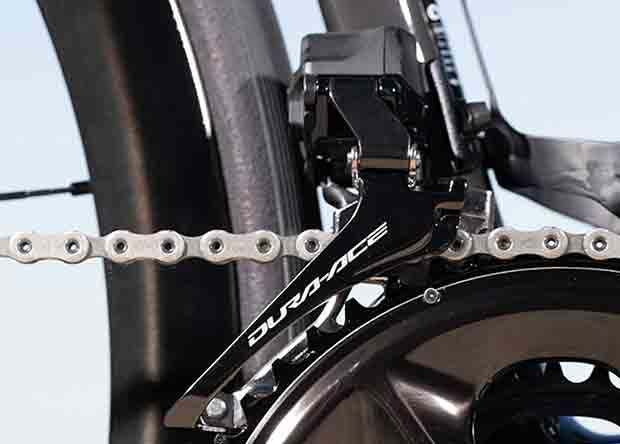
Pricing
As well as I can tell, the aftermarket MSRP price of the groupset is, in US dollars, $4,200.87 for Dura Ace 9200 and $2,470.87 for Ultegra 8100. This would be for the hydraulic brake version, but without the power meter. The upcharge for the integrated power meter (integrated into the crankset) is not that bad, at about $800. It’s the same dollar upcharge for each groupset, which means it’s the same power meter placed into either the DA or the Ult crankset.
I’m including in this “groupset” pricing above the charger. Ultegra 8100 is about 40 percent less ouchy than Dura Ace 9200. But some components are way less ouchy. The savings are slimmer in the areas where you just can’t fudge much. Ultegra’s shift/brake levers are 26 percent cheaper than Dura Ace, and the brake rotors are 32 percent less. But you can buy 3 Ultegra cassettes for the price of 1 DA cassette and have enough left over for a pair of Chipotle burritos. Ultegra’s RD is only half the cost, which I find surprising, since the RDs share similar tech and function.
Tri/TT
As with SRAM, the promise of wireless continues to elude the bikes we ride in no-draft events. There are wires galore in the handlebar area of these new groupsets, a junction box, and two couplings to make it all work. It isn’t any worse that it has been, but it isn’t much (if any) better. It’s still going to be your garden variety headache to build up these bikes, but with electronic shifting you at least have the capacity to disconnect a wire when you need to pack your bike. But you can’t disconnect hydraulic lines (without an inline connection).
But here’s just some food for thought. The way those satellite shifters work, that I mention above, is by a wire that runs from that remote shifter to the main road lever. It seems to me all the electronics for a wireless Tri/TT system are in place. If those satellite shifters are purposed as bar end shifters, and the circuitry in the road levers is stuck into TT levers, you have a system that is mostly wireless (the only wires are those leading from the bar end shifter to the pursuit shifter).
I think we’re just going to have to wait until triathlon picks up, post-COVID, and the sport proves to component makers that the market is there. Then you’ll see your wireless bar-end and pursuit shifters developed.
With an enabled Reader Forum account one can participate in the discussion of these new groupsets, and/or ask any questions and I'll endeavor to answer them on that discussion thread.


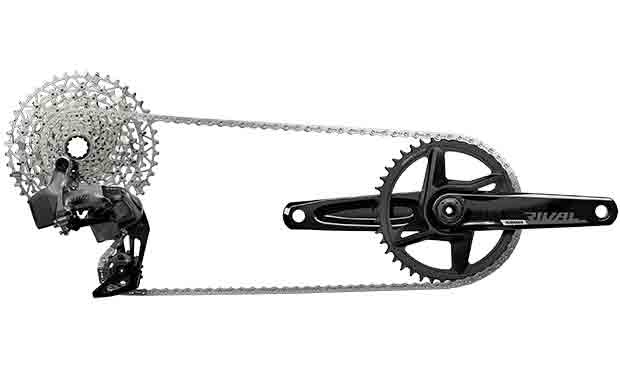
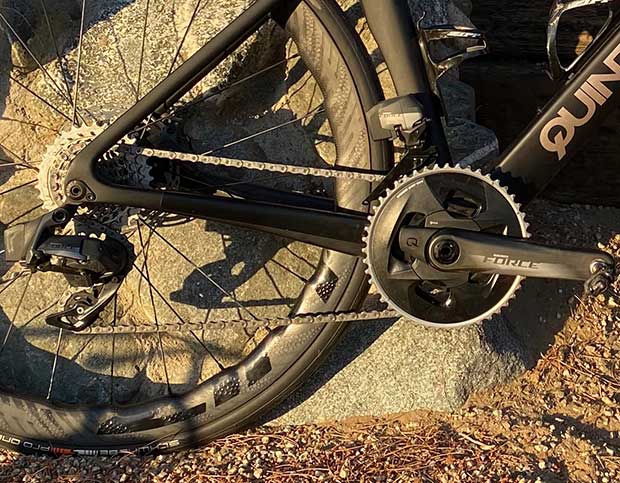
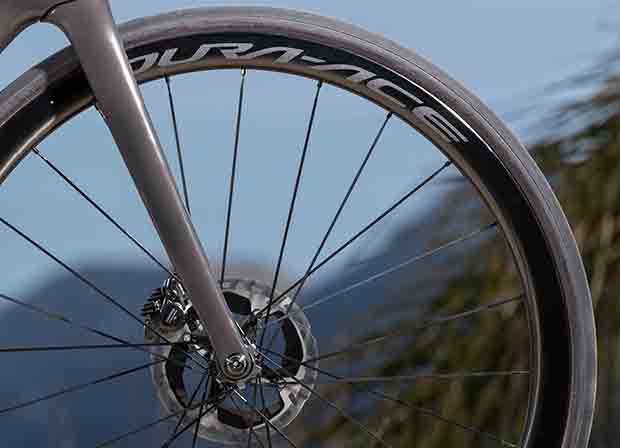
Start the discussion at slowtwitch.northend.network